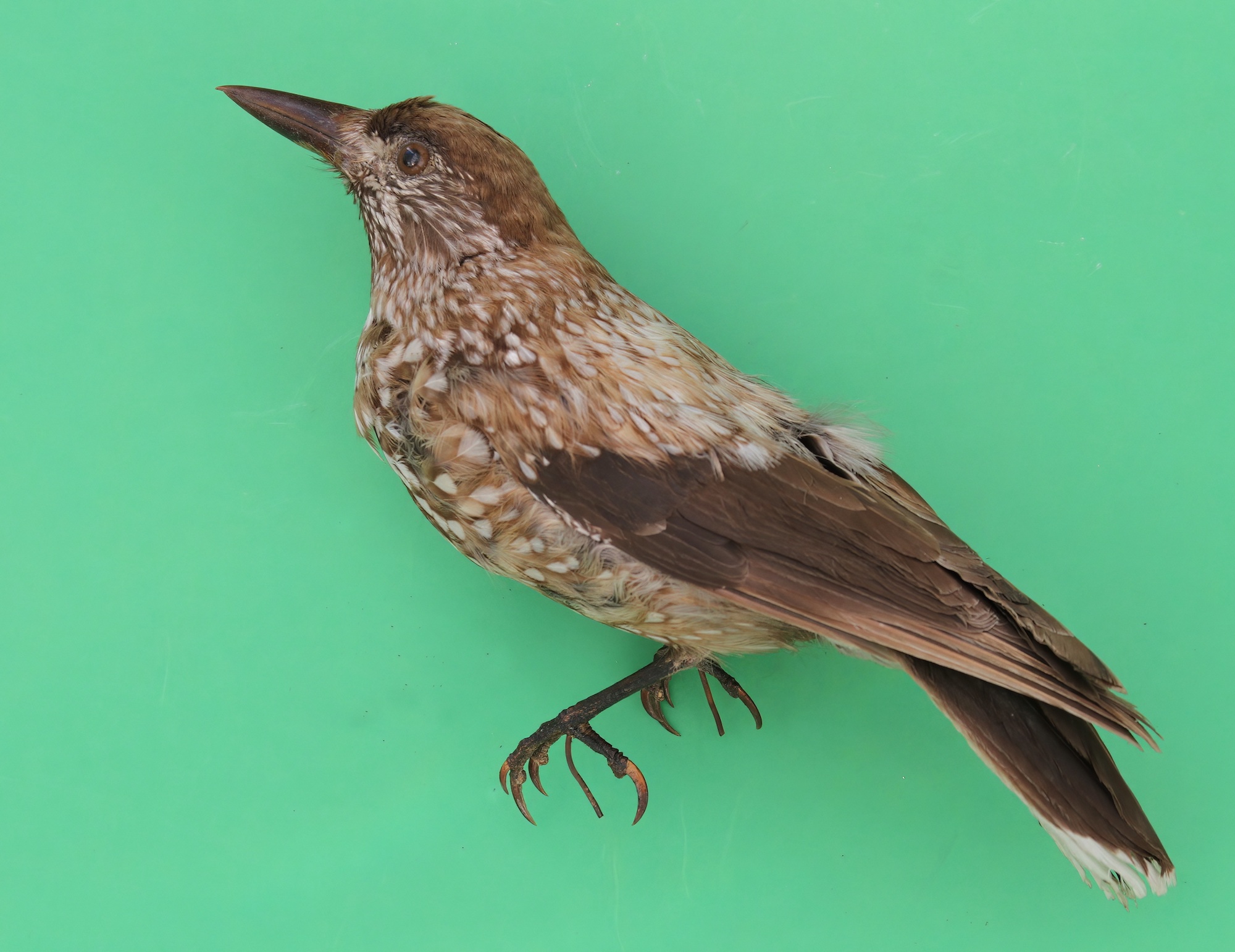Spotted Nutcracker Nucifraga caryocatactes

The invasion in autumn 1968
The fortunes of Nutcrackers fluctuate with the cone crop of the Arolla Pine Pinus cembra that varies from year to year. Invasions seem to occur whenever an abundant year (population increases and there is lower winter mortality in the winter) is followed by a poor year when the birds are driven to seek food elsewhere. There was some evidence of a poor cone crop in western Siberia in summer 1968 that together with an early spell of cold weather in Siberia, was thought to have caused the exceptional westward irruption during the latter part 1968. Exceptional numbers arrived in the UK but those arriving in Sweden, the Baltic States, Germany and the Netherlands eclipsed these. The first Nutcrackers arrived in Sweden, Germany and the Netherlands in late June, and the Baltic States and Poland in July. Numbers built up from then and in early August 4,400 were counted flying NNW at Holmön Island, Umeå in Sweden and peaked there at the end of August. An estimated 90% to 95% of those in Sweden belonged to the Slender-billed race N. c. macrorhynchos. In Germany there were 630 reports of more than 1,300 birds; about 800 were recorded in Belgium; in the Netherlands the first were recorded at the end of June, with more in July and the largest numbers in August. Some 6,000 records were received in the Netherlands and over 100 corpses passed to one taxidermist alone.
Nutcracker arrivals in southeast England were linked to the vast area of high pressure over northern Europe. This anticyclonic weather was particularly prevalent on various dates in August, September and October. The first birds arrived during 6th-17th August and with 21 in Norfolk, 4 in Suffolk and 2 in Kent. By late August the number recorded had risen to 66 with 27 in Suffolk, 11 in Kent, still 10 in Norfolk, and 7 in Essex. One reached Lerwick, Shetland on August 21st.
September was the peak month for the irruption with 138 birds recorded included impressive numbers from Norfolk (47) and Suffolk (41) with records from a further 21 counties by the end of the month including 3 in Lincolnshire. A total of 324 were reported in Britain during the extraordinary autumn of 1968, approximately five times the sum total of all previous British records, from 36 counties in Britain recorded Nutcrackers during 1968 with birds reaching as far west as Cornwall. Most were seen in Norfolk (104), Suffolk (94) and Kent (34). A further 10 were found in early 1969 in Britain in addition to those left over from the 1968 irruption.
| Site | First date | Last date | Count | Notes |
| Sleaford | 1833 | - | 1 |
One was killed near Sleaford during March (no precise date), recorded by A. Fieldsend. The specimen was retained in Lincoln Museum for many years before being placed in storage by the Lincolnshire Naturalists Union and then transferred to the Natural History Museum, Tring in 2017 (photo). |
| Marshchapel | 06/11/1888 | - | 1 | Shot |
| Theddlethorpe | 12/09/1968 | - | 1 | |
| Sutton on Sea | 17/09/1968 | - | 1 | |
| Gibraltar Point | 17/09/1968 | - | 1 | |
| Metheringham | 09/04/1969 | - | 1 | |
| Donna Nook | 12/09/1976 | - | 1 |
Finder’s report: Nutcracker at Metheringham, April 9th, 1969.
by J. S. Mighell
Note: this short account is taken from the original letter submitted to the Rarities Committee, and it's the only county record in 1969, coming as it did after the unprecedented influx during 1968 summarised above. The record was accepted, one of 15 accepted records in 1969, and appeared in the paper in British Birds by Hollyer (1970),
Circumstances and description
At 07.15 hr. on April 9th, 1969, I had just crossed the level crossing at Metheringham station on my way to Billinghay when I noticed a ‘Jay-like’ bird flying out of the woods (birch, larch, and pine) on my right. As Jays are scarce there, I pulled up the car and in the brilliant sunshine watched this bird flying over me at about 15 yd. (no binoculars available).
Th most obvious thing was its matt chocolate colour and white spots on the body. The white undertail coverts contrasting with the wings which appeared very dark. The bird flew over the road, across a grain field and landed halfway up an Ash tree about 200 yd. away. It remained perched in the tree for about ½ a minute and then flew out of sight flying north.

